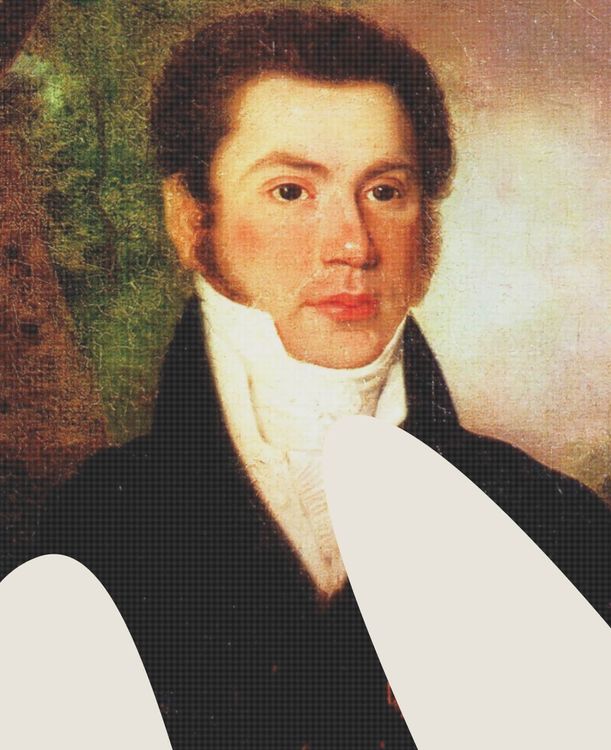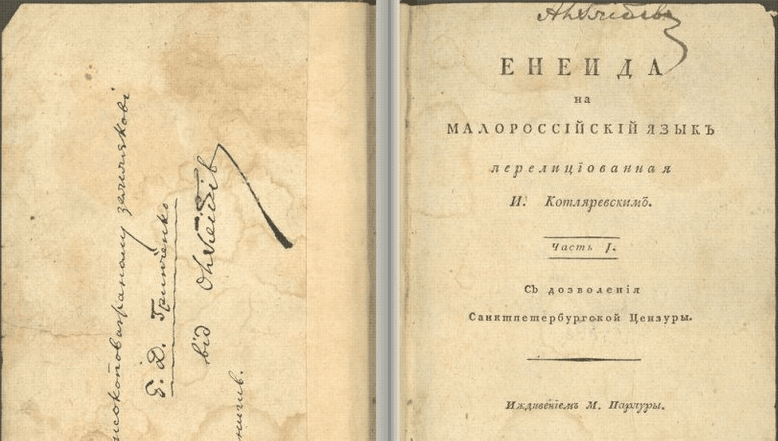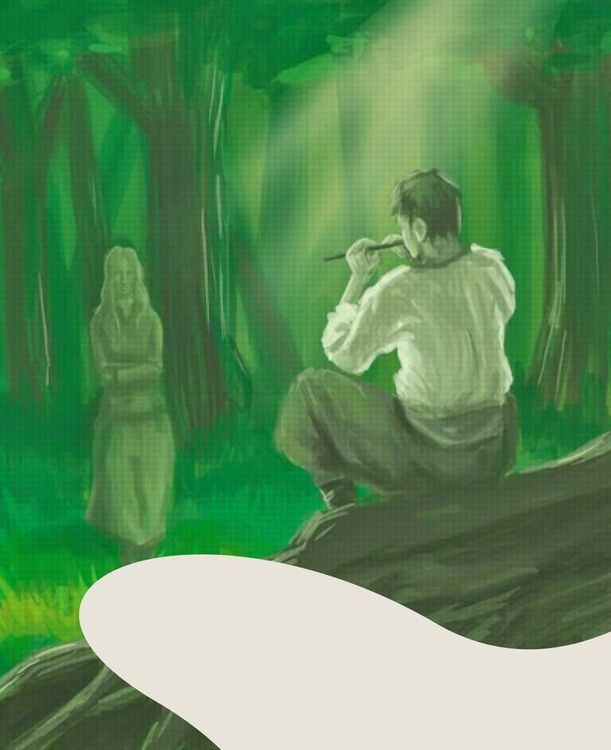Aeneid by Ivan Kotliarevsky

The first literary work written in vernacular Ukrainian language.
1842
Fonts:
Monofontis (Bold)
Designers:
At the age of 27, while serving in the Russian army, Ivan Kotliarevsky began working on “Eneida.” The work was first published unbeknownst to the author and was only fully released after his death. This piece of literature had a significant impact on the status of the Ukrainian language and the development of Ukrainian literature as a whole.

Based on Virgil’s poem “Aeneid”, following all the canons of travesty and burlesque, Kotliarevsky’s poem has transformed from a heroic tale about Aeneas, who travels from Ilion to Italy, into a comic narrative about Ukrainian Cossacks seeking free lands after the destruction of the Zaporizka Sich (Zaporizhia Host), Cossack’s stronghold.
Against the backdrop of historical settings, the author skillfully and accurately depicts the daily life and customs of various social classes of the contemporary Ukrainian population: Cossacks, landowners, and feudal lords, with all their positive traits and shortcomings. The author describes Ukrainian traditions, beliefs, clothing, headwear, furniture, weapons, tools, and musical instruments.
In contrast to the original work, Kotliarevsky’s text was shortened from 12 books to six. However, this did not prevent him from using almost seven thousand words in the text and creating a unique encyclopedia of the Ukrainian people, interweaving references to characters from Ukrainian folklore into the plot.

Ivan Kotliarevsky authored a piece that has become a source of proverbs and quotes which Ukrainians still use to this day, more than 180 years after the publication of the text in 1842. The colorful, bold, and ironic “Eneida” portrays the reality of that time without embellishments, documenting the era through depictions of beliefs, rituals, traditions, and daily life.
The most important thing is that this work is the first written in vernacular Ukrainian language and marks a crucial milestone in the development of literary Ukrainian.
Fonts:
Monofontis (Bold)
Details:
Aeneid by Ivan Kotliarevsky
Designers:
About font:
Next letter and event

Aeneid by Ivan Kotliarevsky
this project
in social
“Shchedryk” (The Little Swallow)


Zhyvyi lantsiuh (Human chain for the 71st anniversary of the Act Zluky)

“Smilyvi zavzhdy maiut shchastia” (“The brave always have happiness”)

Peresopnytske Yevanheliie (The Peresopnytsia Gospel)

Chornobyl Disaster


Falz-Fein and his “Askania Nova”

“Smilyvi zavzhdy maiut shchastia” (“The brave always have happiness”)

Yizhak protytankovyi (Czech hedgehog)


Shliakh iz variah u hreky (Route from the Varangians to the Greeks)


Falz-Fein and his “Askania Nova”

Zaporizka Sich (The Zaporizhian Host)

Peresopnytske Yevanheliie (The Peresopnytsia Gospel)


Zhyvyi lantsiuh (Human chain for the 71st anniversary of the Act Zluky)

Chornobyl Disaster


Danylo Halytskyi

Creative & Tech Online Institute
Медіа про дизайн, креатив і тех індустрії

Ukrainski sichovi striltsi (The Ukrainian Sich Riflemen, or the USS)

Orlyk’s Constitution

“Plyve kacha po Tysyni...” (“Swims the duckling, on the Tysa...”)

“Smilyvi zavzhdy maiut shchastia” (“The brave always have happiness”)

Khreshchenia Rusi (Christianization of Kyivan Rus’)

Holodomor

Lisova Pisnia (The Forest Song)

“Smilyvi zavzhdy maiut shchastia” (“The brave always have happiness”)

Holodomor

Mariupol

Peresopnytske Yevanheliie (The Peresopnytsia Gospel)


Aeneid by Ivan Kotliarevsky

“Shchedryk” (The Little Swallow)


Danylo Halytskyi

“Yoi, nai bude!” (Ah, let it be!)




